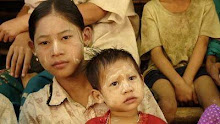 The Christmas Truce, which occurred primarily between the British and German soldiers along the Western Front in December 1914, is an event the official histories of the "Great War" leave out, and the Orwellian historians hide from the public. Stanley Weintraub has broken through this barrier of silence and written a moving account of this significant event by compiling letters sent home from the front, as well as diaries of the soldiers involved. His book is entitled Silent Night: The Story of the World War I Christmas Truce. The book contains many pictures of the actual events showing the opposing forces mixing and celebrating together that first Christmas of the war. This remarkable story begins to unfold, according to Weintraub, on the morning of December 19, 1914:
The Christmas Truce, which occurred primarily between the British and German soldiers along the Western Front in December 1914, is an event the official histories of the "Great War" leave out, and the Orwellian historians hide from the public. Stanley Weintraub has broken through this barrier of silence and written a moving account of this significant event by compiling letters sent home from the front, as well as diaries of the soldiers involved. His book is entitled Silent Night: The Story of the World War I Christmas Truce. The book contains many pictures of the actual events showing the opposing forces mixing and celebrating together that first Christmas of the war. This remarkable story begins to unfold, according to Weintraub, on the morning of December 19, 1914:"Lieutenant Geoffrey Heinekey, new to the 2ND Queen’s Westminister Rifles, wrote to his mother, ‘A most extraordinary thing happened. . . Some Germans came out and held up their hands and began to take in some of their wounded and so we ourselves immediately got out of our trenches and began bringing in our wounded also. The Germans then beckoned to us and a lot of us went over and talked to them and they helped us to bury our dead. This lasted the whole morning and I talked to several of them and I must say they seemed extraordinarily fine men . . . . It seemed too ironical for words. There, the night before we had been having a terrific battle and the morning after, there we were smoking their cigarettes and they smoking ours." (p. 5)
As night fell on Christmas Eve the British soldiers noticed the Germans putting up small Christmas trees along with candles at the top of their trenches and many began to shout in English "We no shoot if you no shoot."(p. 25). The firing stopped along the many miles of the trenches and the British began to notice that the Germans were coming out of the trenches toward the British who responded by coming out to meet them. They mixed and mingled in No Man’s Land and soon began to exchange chocolates for cigars and various newspaper accounts of the war which contained the propaganda from their respective homelands. Many of the officers on each side attempted to prevent the event from occurring but the soldiers ignored the risk of a court-martial or of being shot.
Some of the meetings reported in diaries were between Anglo-Saxons and German Saxons and the Germans joked that they should join together and fight the Prussians. The massive amount of fraternization, or maybe just the Christmas spirit, deterred the officers from taking action and many of them began to go out into No Man’s Land and exchange Christmas greetings with their opposing officers. Each side helped bury their dead and remove the wounded so that by Christmas morning there was a large open area about as wide as the size of two football fields separating the opposing trenches. The soldiers emerged again on Christmas morning and began singing Christmas carols, especially "Silent Night." They recited the 23RD Psalm together and played soccer and football. Again, Christmas gifts were exchanged and meals were prepared openly and attended by the opposing forces. Weintraub quotes one soldier’s observation of the event: "Never . . . was I so keenly aware of the insanity of war." (p. 33). Read more here.
 This is going to be one of my Christmas reads for sure.
This is going to be one of my Christmas reads for sure.Suddenly a great company of the heavenly host appeared with the angel, praising God and saying, "Glory to God in the highest, and on earth peace to men on whom his favor rests." -Luke 2:13-14

No comments:
Post a Comment